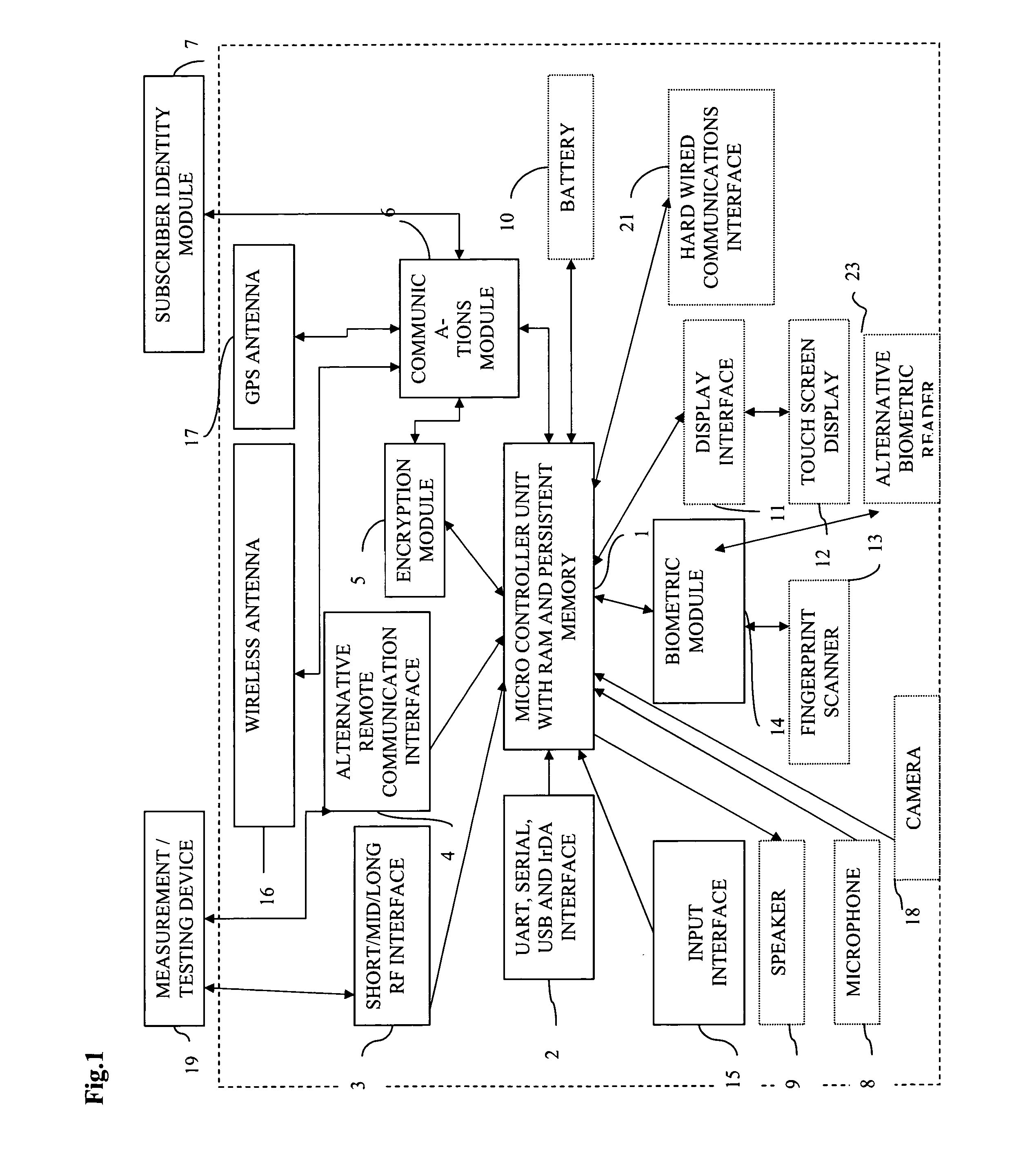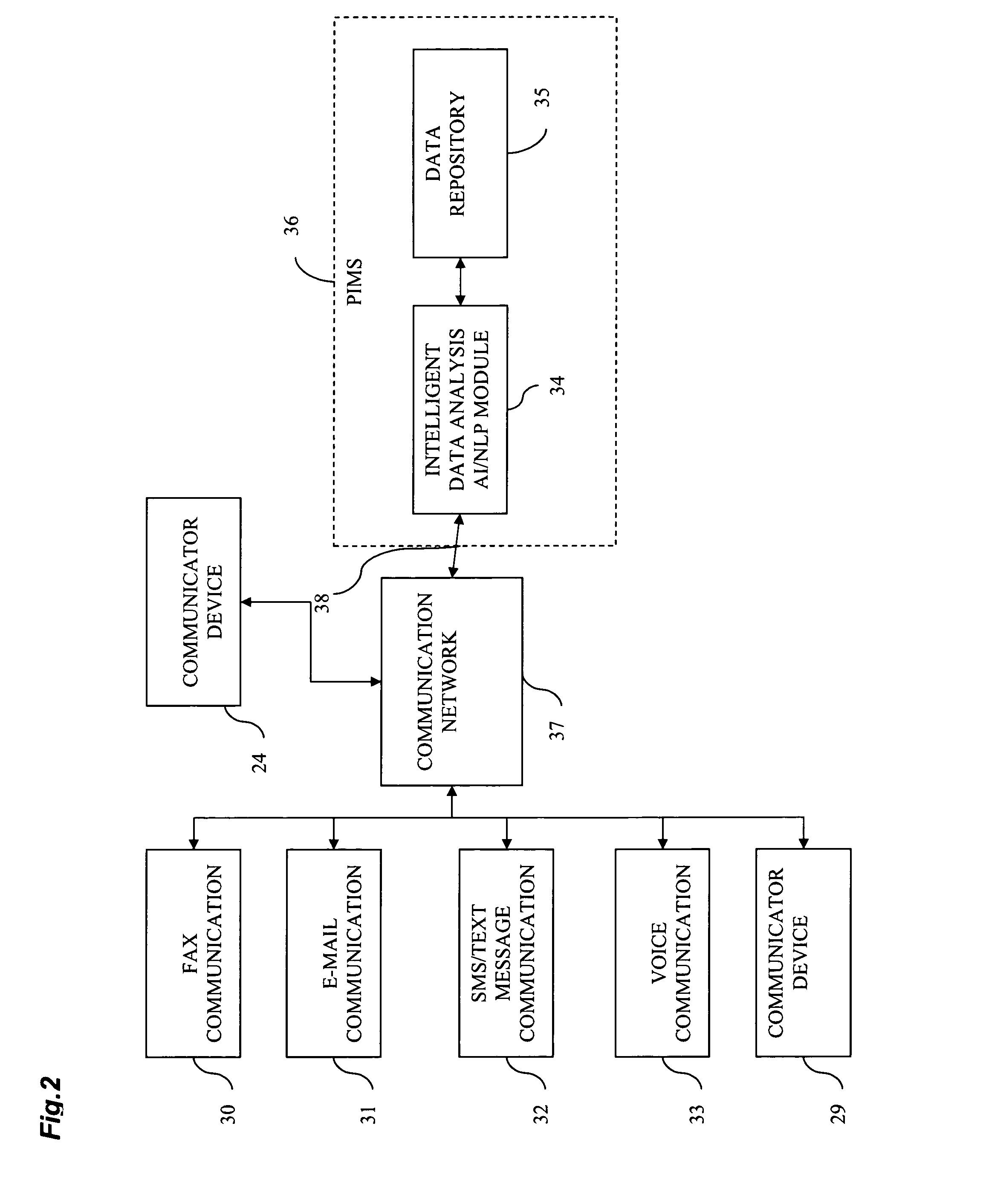Patient Management Support System for Patient Testing and Monitoring Devices
a technology for monitoring devices and patient management, applied in the direction of mechanical pattern conversion, computer security arrangements, instruments, etc., can solve the problems of not fully embracing the communications business' medical business requirements, requiring significant human labor for interaction and coordination by multiple parties, and limiting the use of wireless devices to cardiac/patient patients
- Summary
- Abstract
- Description
- Claims
- Application Information
AI Technical Summary
Benefits of technology
Problems solved by technology
Method used
Image
Examples
Embodiment Construction
[0243]Referring to FIG. 1, MCU(1) is a heart of Communicator device(24) as it provides controlling function for all modules, listed above. MCU(1) establishes communication channel with (19) by wired means (2) or wireless means (3) or (4). Encryption module (5) may or may not be used in data transmission between (24) and (19) depending on capabilities of (19). Communicator device (24) requests measurement data (100) from (19) via created communication channel and (19) transmits data to (24). Then MCU (1) optionally displays request for biometrical data identification of the user (40) via (11) and (12) or (9). User provides biometric input for analysis via fingertip scanner (13) or alternative biometric reader(23) (Ex. iris scanner) for further processing by (14). Biometric data (90) is processed by (14) and MCU (1) verifies it against stored user biometric data in MCU internal memory (91). If verification is successful, 100 and 101 will be personalized by global unique user id that S...
PUM
 Login to View More
Login to View More Abstract
Description
Claims
Application Information
 Login to View More
Login to View More - R&D
- Intellectual Property
- Life Sciences
- Materials
- Tech Scout
- Unparalleled Data Quality
- Higher Quality Content
- 60% Fewer Hallucinations
Browse by: Latest US Patents, China's latest patents, Technical Efficacy Thesaurus, Application Domain, Technology Topic, Popular Technical Reports.
© 2025 PatSnap. All rights reserved.Legal|Privacy policy|Modern Slavery Act Transparency Statement|Sitemap|About US| Contact US: help@patsnap.com



